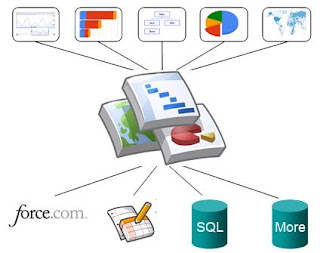We're also pleased to announce that Salesforce.com has made available some tools to make the Google Visualization API even easier to use. These tools enable their customers to build sophisticated reporting and analysis applications using the API that works with data inside Salesforce.com's CRM. The Visualization API also enables developers to create custom reporting applications to sell to Salesforce customers or to other companies with data in the cloud. Earlier today at the Dreamforce conference, Adam Gross, Vice President, Developer Marketing, Salesforce.com, commented that "The enhancement of the Google Visualization API represents a significant opportunity for developers. We expect to see the creation of new tools for our users to quickly generate reports and dashboards for their Salesforce CRM data and in their Force.com applications. These enhanced analysis capabilities will provide our customers with greater productivity and deeper insight into their businesses."
As companies open their platforms, we expect to see increased integration of data and services across clouds, benefiting the enterprise community.
